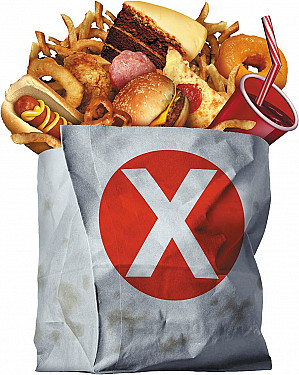Nutritional yeast: Does this savory, vegan seasoning pack a nutritional punch?
- Reviewed by Nancy Oliveira, MS, RD, LDN, CDCES, Contributor; Editorial Advisory Board Member, Harvard Health Publishing

Health-conscious folks have long sprinkled savory nutritional yeast flakes — a vegan version of parmesan cheese — on popcorn, pasta, salad, and more for an umami-rich punch. But consumers should be aware that this condiment, affectionately known as "nooch," sometimes functions like a supplement.
What is nutritional yeast?
Nutritional yeast is an inactivated strain of the fungus Saccharomyces cerevisiae. Some strains of this fungus cause bread to rise (baker's yeast) while others turn sugars into alcohol to brew beer (brewer's yeast).
Nutritional yeast, however, can't do either: Processors grow the cells in energy-rich molasses, then de-activate them with heat. The yeast cells die, and release glutamic acid, a savory flavor.
The USDA considers nutritional yeast a food additive. As a product, it comes in pouches or canisters, as flakes, granules, or a powder. Stores often sell it in the spice or condiment sections. (Don't confuse nutritional yeast with yeast supplements, which are capsules typically containing baker's and brewer's yeast.)
Nutritional yeast: A worthy moniker?
Unfortified nutritional yeast contains just a few nutrients: One serving (two tablespoons) has 2% of the Daily Value (DV) for potassium and 8% DV for thiamin, as well as 180% DV riboflavin. "Natural, unfortified nutritional yeast is not actually a great source of B vitamins," says Nancy Oliveira, a registered dietitian and manager of the nutrition and wellness service at Brigham and Women's Hospital.
That said, most nutritional yeast found in grocery stores is fortified. Fortified nutritional yeast can contain very high levels of many vitamins including niacin, vitamin B6, thiamin, riboflavin, folate, and vitamin B12. Processors have to add many of these vitamins to their products because they're either not naturally present or not present at high levels. One serving of one popular brand of nutritional yeast also has 2 grams of fiber and 5 grams of protein.
Since fortified nutritional yeast contains so many added vitamins, an independent third-party group called Consumer Lab, which analyzes supplements, tested several brands of nutritional yeast. They found that the nutrient levels listed on the labels weren't always accurate.
A word of caution
There are a few reasons to be cautious when incorporating nutritional yeast into your diet. One is that the high levels of vitamins added to the products can quickly push you over the recommended daily level, and even past the upper limit. For example, the tolerable upper limit (UL) for niacin is 35 milligrams per day for adults. Some brands of nutritional yeast contain that amount, or much more, in a 2-tablespoon serving.
High niacin intake can trigger niacin flushing, when the skin on the face, chest, and arms turns red and burns, itches, and tingles; headaches, rashes, and dizziness can also result. If you take a multivitamin in addition to eating nutritional yeast, you could be consuming even higher amounts of many vitamins.
Other concerns exist as well. Though rare, some people are allergic or sensitive to Saccharomyces cerevisiae. Some people with inflammatory bowel diseases like Crohn's disease may experience issues after consuming nutritional yeast. Nutritional yeast also naturally contains the amino acid glutamate, which is a component of MSG. Anyone with a sensitivity to MSG may want to avoid it.
If you are taking an older class of antidepressants called MAOIs, be aware that yeast naturally contains an amino acid called tyramine. In concentrated yeast products, tyramine levels are very high and can interact with MAOIs, causing a sharp spike in blood pressure and severe headache. Speak with your doctor before consuming nutritional yeast if you are taking an MAOI.
Finally, vegans, who are at increased risk for vitamin B12 deficiency, sometimes consume fortified nutritional yeast to increase their vitamin B12 levels. (Unfortified nutritional yeast has no vitamin B12.) For many of these reasons, says Oliveira, "I wouldn't eat nutritional yeast to get B12 up, as products contain such variable levels. I would take a B12 supplement or follow your doctor's guidance to treat an actual deficiency."
Tips for incorporating nutritional yeast into your diet
Oliveira says that if you like the taste of nutritional yeast and don't use too much of it, you should feel free to sprinkle it on your food. A dash on pasta or salad provides a little pop of umami flavor. Nutritional yeast can also help thicken soup or be used to flavor sour cream for a dip. Adding it to pesto in the place of parmesan cheese keeps it vegan as well.
"It is meant to be a condiment," says Oliveira, "Not taken as a supplement or eaten in excess."
About the Author

Rachael Moeller Gorman, Health Writer
About the Reviewer

Nancy Oliveira, MS, RD, LDN, CDCES, Contributor; Editorial Advisory Board Member, Harvard Health Publishing
Disclaimer:
As a service to our readers, Harvard Health Publishing provides access to our library of archived content. Please note the date of last review or update on all articles.
No content on this site, regardless of date, should ever be used as a substitute for direct medical advice from your doctor or other qualified clinician.















